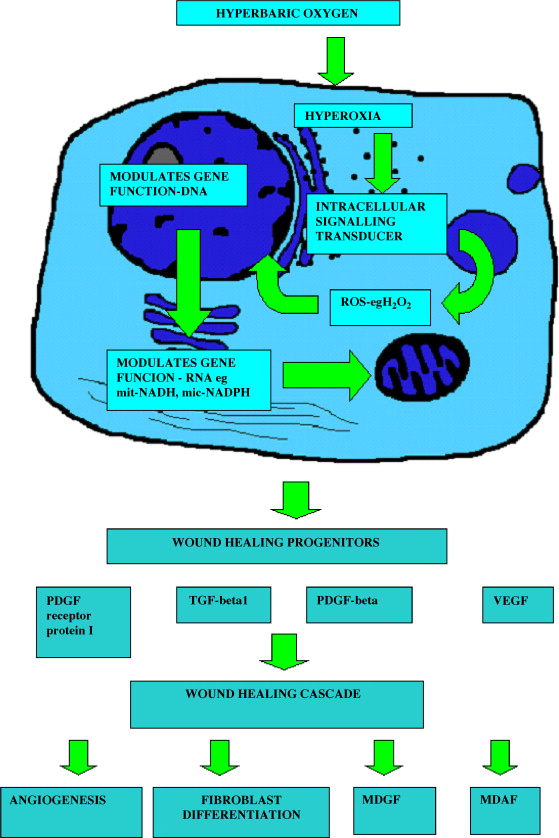
Hope for Survivors of Pelvic Cancer: Hyperbaric Oxygen Therapy Provides Long-Term Relief from Radiation Aftereffects
Individuals struggling with significant side effects from pelvic cancer radiation therapy have a promising and lasting source of hope. A groundbreaking five-year clinical investigation published in The Lancet eClinicalMedicine indicates that hyperbaric oxygen therapy (HBOT) markedly reduces severe urinary issues caused by radiation damage—providing enduring relief for conditions previously viewed as chronic and untreatable.
The Nordic RICH-ART trial, which monitored 70 individuals across five prestigious university hospitals in Sweden and Norway, revealed that nearly 70% of participants experienced significant and lasting enhancements in bladder function. These improvements remained robust even five years post-HBOT treatment, which requires patients to inhale pure oxygen inside a specially pressurized chamber, ultimately boosting the body’s healing capabilities.
“This can determine whether someone leads a severely constrained life or returns to full normalcy,” highlights Dr. Nicklas Oscarsson, senior consultant and lead researcher at the University of Gothenburg and Sahlgrenska University Hospital. “We can now confidently state that the advancements these patients witness are enduring—their benefits persist.”
The Hidden Costs of Radiation: Impact on Quality of Life
Radiation therapy, a fundamental approach for treating cancers such as those of the prostate, cervix, ovaries, and colon, effectively eliminates tumors. However, it can inadvertently damage adjacent healthy tissues, particularly the bladder and urinary system. This radiation-induced trauma may appear years after treatment concludes, with symptoms ranging from incontinence and frequent urination to chronic pelvic discomfort and even bleeding—conditions that may progressively intensify over time.
Approximately 5-10% of individuals undergoing pelvic radiation experience such severe side effects. Nonetheless, until now, long-term remedies have been scarce, especially for those for whom traditional treatments have proven ineffective.
HBOT: Oxygen as a Therapeutic Approach
Hyperbaric oxygen therapy, traditionally utilized for conditions like decompression sickness and slow-healing wounds, is increasingly acknowledged for its regenerative possibilities in post-radiation rehabilitation. The biological mechanism is elegantly simple: by saturating tissues with oxygen under high pressure—simulating conditions experienced 14 meters below water—the therapy encourages new blood vessel formation and reduces chronic inflammation.
The findings were clear-cut. Patients demonstrated an average increase of 19.1 points in urinary function on a standardized medical scale—a rise that is double the nine-point threshold recognized as clinically significant. Even more promising, some patients who initially showed no improvement at six months began to show recovery in follow-up evaluations, underscoring the therapy’s potential for delayed but lasting advantages.
An Underutilized Resource
Despite its potential, HBOT is not widely employed in radiation aftercare. “We already have the capacity to treat more patients than we currently do,” states Oscarsson. “The primary challenge is awareness—not just among patients, but also within the medical field. We urge healthcare providers and cancer organizations to assist in disseminating these discoveries.”
The treatment entails a rigorous but feasible regimen: daily 90-minute sessions over 30 to 40 days. While demanding, the benefits—as illustrated by the study—can last for five years or more, an investment that few cancer survivors would shy away from considering the alternatives.
Future Implications for Cancer Treatment
Beyond its immediate impact on alleviating urinary challenges, HBOT has the potential to alter the approach to radiation therapy in oncology entirely. Presently, radiation doses are limited to minimize collateral damage risk. With a tool like HBOT available to manage or even avert side effects, future treatments could become more assertive and aim closer to a cure.
What’s next for research? Investigating whether early application of HBOT could prevent radiation injury before it manifests—potentially revolutionizing the recovery process for countless cancer survivors worldwide.
Looking Ahead
This study instills fresh hope for those dealing with the aftermath of effective yet damaging cancer treatments. As HBOT systems become more widely accessible and understanding of their advantages grows, numerous patients previously encumbered by the hidden expenses of surviving cancer may now anticipate a life characterized by normalcy, comfort, and renewed dignity.
For survivors, their families, and healthcare professionals, this work underscores the significance of not just surviving cancer—but thriving afterward.
Help Share Life-Saving Discoveries
If narratives like this motivate you, consider supporting independent scientific journalism. Your contributions empower us to continue highlighting breakthroughs that transform lives—amplifying the voice of science for those who need it the most.
Together, we can make medical insights accessible, impactful, and lasting.